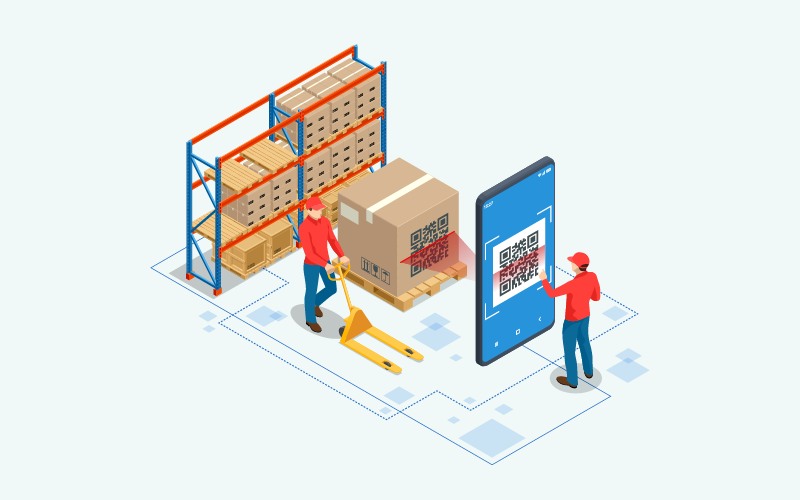A cutting-edge inventory management system, utilizing advanced technologies such as IIoT, robotics, RFID tracking, and smart shelves, is a powerful solution for managing inventory. The system utilizes real-time data collection and analysis to monitor the location, condition, availability, and shipment status of goods, allowing for optimal inventory levels to be maintained. With complete warehouse visibility and streamlined inventory handling throughout the distribution cycle, this system minimizes the need for manual intervention, providing an efficient and effective solution for inventory management.
Smart inventory systems offer numerous benefits to businesses looking to optimize their operations and improve efficiency. Some key advantages include:
- Automation of manual tasks such as item tracking, inventory database updating, report generation, and restocking, which saves time and reduces the risk of human error.
- Real-time inventory visibility through updates on item status, quantity, location, and movement, enabling managers to make informed demand forecasting decisions.
- Identification of overstocks and stockouts for inventory optimization and implementation of a just-in-time inventory strategy to reduce unnecessary warehouse costs.
- Real-time monitoring of all warehouse operations for early detection of supply chain disruptions and immediate action.
- Improved customer satisfaction through effective order management, timely shipments, and analytics-driven planning to prevent overselling and ensure stock availability.
Ways in which businesses are leveraging smart inventory systems for improved efficiency
Businesses are utilizing smart inventory systems in various ways to improve efficiency and streamline operations. Examples of how businesses are implementing these systems include automating manual tasks, offering personalized shopping experiences, automating inventory tracking, reducing errors and increasing traceability, implementing intelligent inventory management solutions, utilizing automation in warehouses and fulfillment centers, and more.
Some examples include:
Decathlon, a French sports equipment retailer, implemented a system called StockBot to assist store staff with inventory tracking and data collection. The system uses RFID tracking and smart navigation to move around stores, collect inventory data, and update the inventory database in real-time, allowing staff to focus more on customers.
Kroger, the largest supermarket chain in the US, introduced EDGE smart shelves to offer personalized shopping experiences to customers. IoT-enabled displays show prices and promotions, and connect to customer’s shopping lists via Bluetooth to guide them through the store. IoT sensors collect real-time data on customer actions, which is used to make informed inventory decisions.
Polaris Industries, a US automotive manufacturer, implemented an RFID solution to automate inventory tracking throughout their plant. The system provides real-time data on unit locations, improving inventory counting accuracy and reducing manual labor costs.
Dana Incorporated, a US car part supplier, introduced RFID technology to automate item tracking and achieve real-time inventory visibility. This led to reduced errors from manual data entries, shorter production cycles, and 100% traceability of items.
NLMK La Louvière, a Belgian hot- and cold-rolled coil producer, implemented an intelligent inventory management solution that keeps optimal stock levels, ensures smooth order fulfillment, and offers predictive analytics.
DHL, a global logistics services provider, utilizes automation at their smart warehouse in Beringe, Netherlands. Stationary and mobile robots work together with people to pick and transport goods, reducing the physical toll on workers and improving safety conditions. Wireless tracking technology monitors the movement of warehouse equipment and people in real-time to improve navigation efficiency.
Ocado, a UK online grocery store, employs a fleet of 1,100 robots at its fulfillment center to pick up crates and deliver them to stations where employees assemble customer orders.
Smart Inventory Management: The way forward
Smart inventory management is becoming the new standard for businesses worldwide. Companies across various industries are recognizing the benefits that it can bring, including increased operational efficiency and improved customer experience. They are implementing smart inventory systems to gain better visibility into their inventory levels, optimize their supply chains, reduce reliance on manual labor, and streamline inventory workflows. If you’re seeking a smart solution for your inventory management needs, reach out to Ways and Means Technology. Our team of experts can provide a custom-built solution that caters to your specific requirements.





